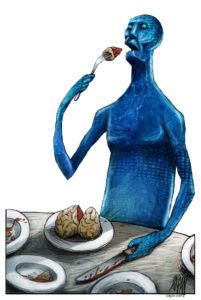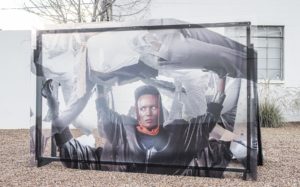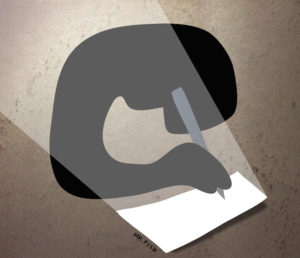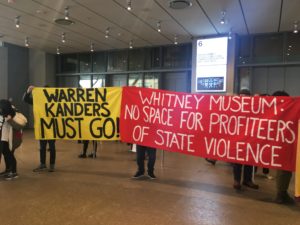The Art of Resistance: A Look at the Poor People’s Campaign’s ‘Justice Art Movement’
Hosted by the Poor People's Campaign, a group of artists and activists shares songs, artwork and cultural stories of racism and poverty in America. Taina Asili takes the stage at the "Justice Art Movement" hosted by the Poor People's Campaign. (Clara Romeo / Truthdig)
Taina Asili takes the stage at the "Justice Art Movement" hosted by the Poor People's Campaign. (Clara Romeo / Truthdig)
 Photo Essay
photo essay
Photo Essay
photo essay
On May 24, an assembly of artists and activists hosted by the Poor People’s Campaign shared songs, artwork and cultural stories at BloomBars in Washington, D.C. The campaign’s “Justice Art Movement” holds weekly events to incorporate artistic works into the movement.
The performances artfully illustrated this week’s focus of the Poor People’s Campaign, “Linking Systemic Racism and Poverty: Voting Rights, Immigration, Xenophobia, Islamophobia, and the Mistreatment of Indigenous Communities.”
The two guest performers of the evening, Raye Zaragoza and Taina Asili, both sang songs of their heritage and racial inequality. “Growing up, I didn’t know where my place was in the American dream. My mom is an immigrant and my dad is indigenous. I saw all the racism they both went through,” Zaragoza shared before performing her song “American Dream.” “The way they were treated was similar. They were both outsiders.”
Puerto Rican performer Asili further illuminated the role of inclusivity in the Poor People’s Campaign while paying homage to the movement’s historical underpinnings. “Remembering the legacy of resistance, that beautiful legacy that has brought us to today, this moment didn’t come out of nowhere. This has been passed on to us, this powerful movement. I sing this in honor of our ancestors who did this powerful work,” Asili said before performing her original work “Sofrito.”
As the performers sang of injustice, the second level of the venue displayed the visual artwork of the campaign. Twenty-five screenprints by 24 artists were displayed as part of a collaboration between the Poor People’s Campaign and the artist cooperative “Just Seeds.” The prints, which can also be seen being held up in the crowds at the Poor People’s Campaign’s actions, are hung on the wall where visitors can study them.
Leaders of the campaign stressed the importance of incorporating the arts in protest. “The role of arts and culture we know historically have always played such a critical role in social movements” said Charon Hribar, co-director of cultural arts and theomusicology of the Poor People’s Campaign. “Right now with the Poor People’s Campaign, we’re really trying to center the role of music, arts, visual arts and culture as something that helps connect people and helps ground people in the struggles that have come before us.”
Sesheida Young, the D.C. cultural arts director of the Poor People’s Campaign, echoes these sentiments. “The songs have lyrics that connect us in a more inclusive manner, of our struggles, of our oppressions, of our marginalizations, but most importantly, the things that we can unify on.”
Both Hribar and Young incorporated their art into the movement by teaching the audience protest songs for the following week. This week, the pair taught songs related to ending the war economy.
Your support matters…
Independent journalism is under threat and overshadowed by heavily funded mainstream media.
You can help level the playing field. Become a member.
Your tax-deductible contribution keeps us digging beneath the headlines to give you thought-provoking, investigative reporting and analysis that unearths what's really happening- without compromise.
Give today to support our courageous, independent journalists.






You need to be a supporter to comment.
There are currently no responses to this article.
Be the first to respond.